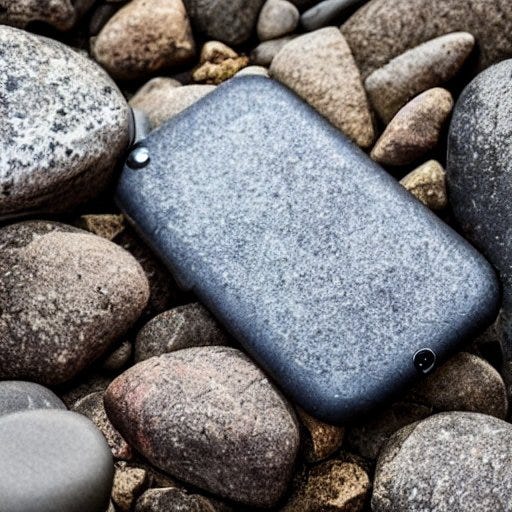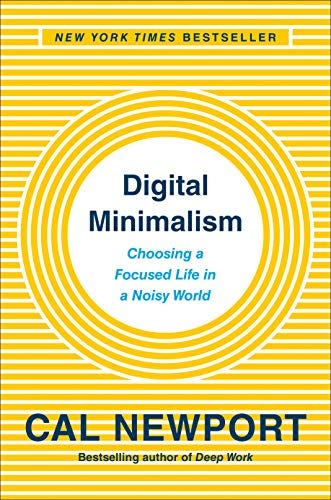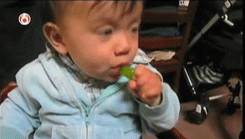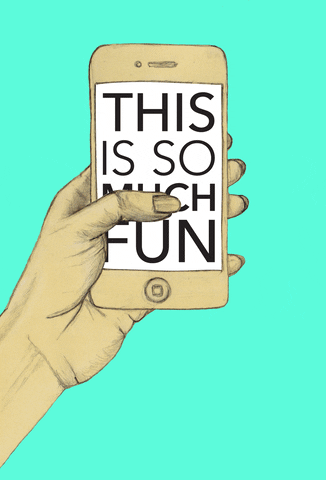Digital Minimalism: Choosing a Focused Life in a Noisy World
Author: Cal Newport

Citation: Newport, C. (2019). Digital minimalism: Choosing a Focused Life in a Noisy World. Portfolio.
Why this book?
Our time on Earth is limited. We want to lead lives well-lived with high-quality relationships and meaningful experiences. The minutes and hours of our days are increasingly at the command of our phones, apps, pings, and notifications. Digital Minimalism is a philosophy and set of practices to assert intentionality and regain control—to determine when and under what conditions we use technologies vying for our most precious gifts: our time and attention.
Could you give up the apps on your phone for a week or longer?
“Declare freedom from your smartphone.”
Key Ideas
The rise of the attention economy.*. With the birth of the smartphone, followed by an explosion of social media apps, people now spend hours passively consuming media. The result is anxiety, depression, and diminished well-being. (See Pew Research 2023, Harvard Magazine 2022, WSJ 2021)
*The attention economy describes the business sector that profits by capturing consumers’ attention and data and repackaging it to sell to advertisers.
This was the subject of the 2020 film The Social Dilemma.
The rise of the attention resistance and slow media. In early 2010, three Germans published the Slow Media Manifesto. They asserted that if the first decade of the 21st century brought sweeping changes to the media landscape, the second should be used to determine the “appropriate response” —especially by embracing slow media, which engages the user’s full concentration and cannot be consumed casually.
Conduct a Digital Declutter. This isn’t a detox or simply taking a break from apps: The goal is to spark a permanent transformation of your digital life.
Step 1: Define Your Technology Rules
Define technologies and apps that fall into the Optional category (i.e., temporary removal would not harm or significantly disrupt your daily personal or professional life).Step 2: Take a 30-Day Break
Step away to gain perspective. The goal is to specify precisely how and when you will use a particular technology after the 30-day fast is completed. You decide whether to maintain some critical uses without reverting to unrestricted access. Write down your rules and post where you can see them. Clarity in what you can and can't do is key to success.Step 3: Reintroduce Technology
Reintroduce it under the condition that it must...Serve something you deeply value (offering some benefit is not enough).
Be the best way to use technology to serve your values (if it’s not, replace it with something better).
Have a role in your life constrained by a standard operating procedure specifying when and how you use it.
Example: Imagine your cousin posts baby videos on Instagram. You deeply value seeing that cutie. However, video calls with your cousin, where you can see and interact with her baby, would better serve your values of family and connection. You choose to drop Instagram because you derive greater satisfaction from investing in your relationship actively rather than passively observing it. Your new “operating procedure” is to check Instagram on your computer on Saturdays for 30 minutes.
Surprises
Solitude. Solitude is a subjective state in which your mind is free from input from other minds—no music, videos, audiobooks, reading, or conversations (Lead Yourself First, 2017). Solitude supports insight and emotional balance that comes from unhurried self-reflection. Other essential benefits include :
The formulation of new ideas
An understanding of the self
Closeness to others (Solitude, 2017)
Solitude deprivation is when you spend close to zero time alone with your thoughts and are not free from input from other minds. We're not wired to be constantly wired.
Dumb down your devices. The Light Phone II can be used on its own or as a complement to your existing smartphone for taking a break and going light. Minimal apps. Just a phone. Learn more at https://www.thelightphone.com/.
Block distractions using Freedom.to.
Conclusion
There is much more in this book worth reading. I enjoyed the discussion of high-quality (“strenuous”) leisure. By the end, you will walk away with 15 practical actions you could implement today to be more mindful about your use of technology. Ultimately, a digital declutter and the resulting personal transformation is a discipline and a practice like yoga, playing the guitar, or writing. The most important act is to begin (and keep working on it).
Rating (out of 4): 🌟 🌟 🌟 🌟





